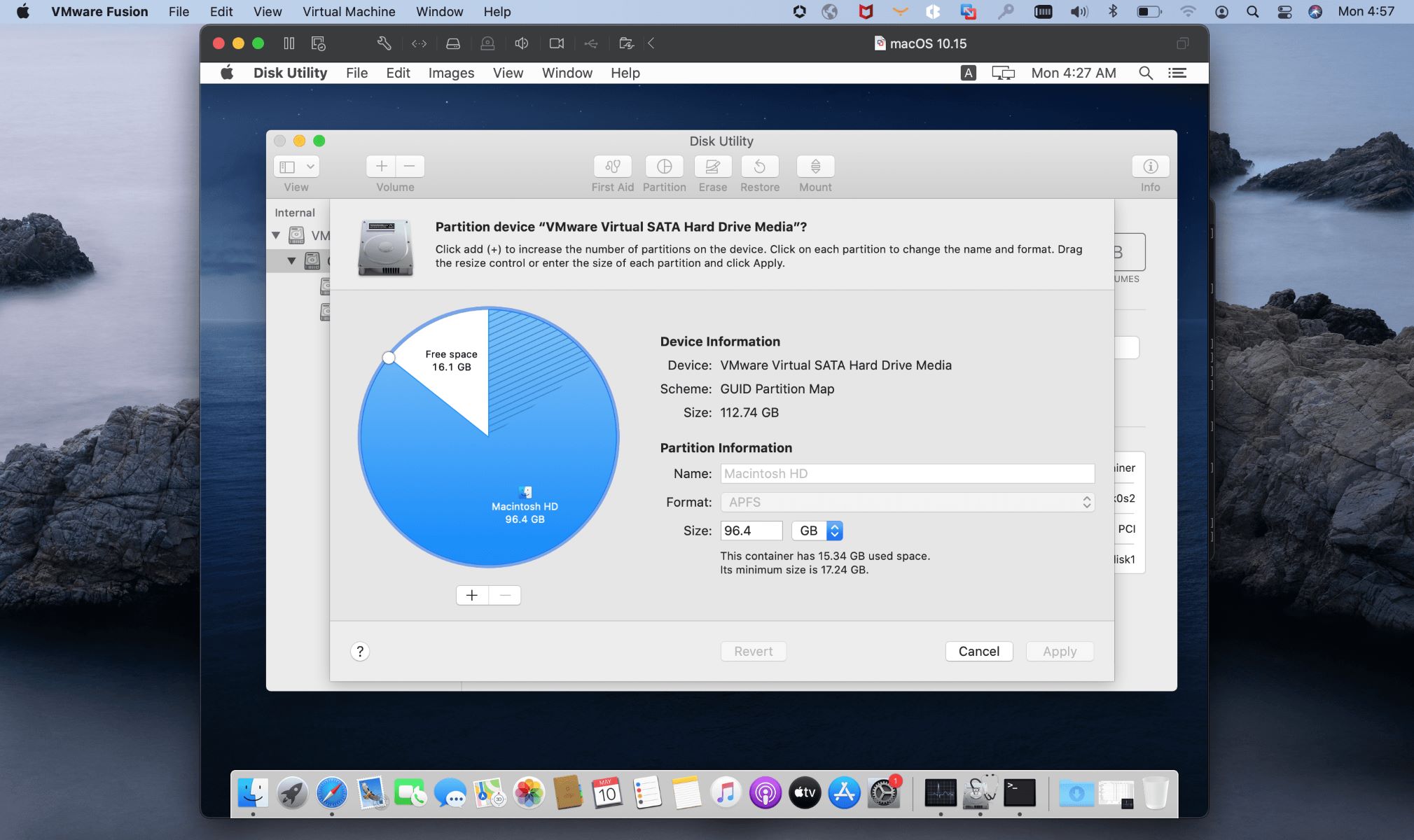Introduction
Welcome to our guide on determining the appropriate drive space for virtual machines on a system. As technology continues to evolve, virtualization has become an integral part of many organizations’ IT infrastructures. Virtual machines provide flexibility, scalability, and cost savings by allowing multiple operating systems to run on a single physical server. However, determining the optimal amount of drive space for each virtual machine can be challenging.
In this guide, we will explore the factors you should consider when determining drive space requirements for virtual machines. We will also provide recommendations for the amount of drive space that should be allocated to each virtual machine. Additionally, we will share some tips for optimizing drive space utilization to ensure efficient performance.
Before diving into the specifics, it is important to understand that the drive space allocation for virtual machines may vary depending on the specific use cases, applications, and workload demands. Therefore, it is crucial to carefully assess your organization’s needs and consider various factors before making a decision.
By the end of this guide, you will have a clear understanding of how much drive space should be available for each virtual machine on a system. Let’s get started!
Factors to Consider when Determining Drive Space for Virtual Machines
Determining the appropriate drive space for virtual machines involves considering several crucial factors. By understanding these factors, you can allocate the right amount of drive space to ensure optimal performance and efficiency for your virtualized environment. Let’s explore the key considerations:
- Operating System and Applications: The size of the operating system and installed applications greatly impact the drive space requirements for each virtual machine. Different operating systems and applications have varying disk space needs, so it’s essential to consider the specific requirements of your virtualized environment.
- Data Storage: The amount of data that needs to be stored within the virtual machine directly affects the required drive space. Consider the nature of your data and whether it is constantly changing or growing over time. Plan for future data growth to ensure sufficient drive space availability.
- Virtual Machine Usage and Workload: The workload and usage patterns of the virtual machine play a significant role in determining the drive space requirements. High-intensity workloads, such as database servers or virtual desktops, might demand more drive space due to frequent read and write operations.
- Snapshots and Backups: If you plan to take snapshots or backups of your virtual machines, allocate additional drive space accordingly. Snapshots and backups require space to store the captured data, and not having enough drive space can lead to errors or incomplete backups.
- Redundancy and Failover: Implementing redundancy and failover mechanisms, such as clustering or replication, may require additional drive space. These mechanisms ensure high availability and fault-tolerance but may increase the overall disk space usage.
- Temporary and Cache Files: Some applications generate temporary or cache files during their operation. These files can consume significant drive space, especially if they are not regularly cleaned. Consider the impact of temporary and cache files on the overall drive space requirements of your virtual machines.
- Future Scalability: It is essential to plan for future scalability when determining drive space requirements. Assess potential growth in your virtualized environment and account for additional virtual machines that might be added in the future. Allocating extra drive space from the beginning can save you from costly upgrades later.
By considering these factors, you can accurately estimate the drive space needed for each virtual machine, ensuring smooth operations and avoiding potential limitations. Next, we will delve into the recommended drive space allocation for virtual machines on a system.
Recommended Drive Space for each Virtual Machine
When determining the drive space allocation for virtual machines, it is crucial to strike a balance between providing sufficient storage and optimizing resource utilization. While the exact amount of drive space required will depend on the specific needs of your virtualized environment, here are some general recommendations:
- Operating System: Allocate a minimum of 20-30 GB for the operating system installation. This will provide enough space for the OS files, updates, and temporary files.
- Applications: Consider the space required for installed applications, updates, and any data generated by those applications. Allocate enough drive space based on your specific application needs. For example, a database server may require additional space for data storage and transaction logs.
- Data Storage: Determine the amount of data that will be stored within the virtual machine. It is recommended to allocate enough drive space to accommodate current data needs and allow for future growth. Consider factors such as file sizes, file types, and any projected data growth.
- Snapshots and Backups: If you plan to take regular snapshots or backups of your virtual machines, allocate additional drive space. The allocated space should be large enough to store the captured data, taking into account the frequency and retention policy of your snapshots and backups.
- Cache and Temporary Files: Factor in the space required for cache and temporary files generated by applications. Cleaning up these files regularly can help optimize drive space utilization and improve performance.
- Redundancy and Failover: If you implement redundancy and failover mechanisms, allocate extra drive space to accommodate replicated or mirrored data. These mechanisms typically require additional storage to maintain data consistency and ensure high availability.
Remember that these recommendations are general guidelines, and your specific environment may require different allocations based on unique usage patterns and requirements. Additionally, it is advisable to monitor the disk usage of your virtual machines regularly and adjust the drive space allocation as needed.
Now that we have explored the recommended drive space allocation, let’s move on to some tips for optimizing drive space utilization in virtual machines.
Tips for Optimizing Drive Space for Virtual Machines
Optimizing drive space utilization is essential to ensure efficient performance and resource utilization in your virtualized environment. By following these tips, you can maximize the available drive space and avoid unnecessary disk usage:
- Regular Disk Cleanup: Schedule regular disk cleanup tasks to remove temporary files, log files, and other unnecessary data. This will help free up valuable drive space and improve overall system performance.
- Monitor and Manage Snapshots: Keep an eye on your virtual machine snapshots and regularly review and delete unnecessary snapshots. Snapshots consume disk space, and excessive or outdated snapshots can quickly fill up your drive. Implement a snapshot management strategy to limit their number and retention time.
- Implement Data Deduplication: Utilize data deduplication technologies to identify and eliminate duplicate data. This can significantly reduce disk space usage by storing only unique portions of data, especially in virtualized environments where many virtual machines share common files.
- Enable Thin Provisioning: Thin provisioning allows you to allocate virtual machine storage dynamically. Instead of allocating the full drive space upfront, you can allocate space as needed. This prevents overallocation of drive space and can help optimize disk utilization.
- Use Compression: Enable compression at the storage level to reduce the size of data on the disk. Compression algorithms can help shrink file sizes, saving disk space without affecting performance significantly.
- Consider Storage Tiering: Implement storage tiering to optimize disk space usage. By placing frequently accessed data on high-performance storage tiers and less frequently used data on lower-cost storage tiers, you can maximize performance and reduce overall storage costs.
- Regularly Monitor Disk Usage: Use monitoring tools to monitor disk usage across your virtual machines. This will provide insights into disk space utilization trends, allowing you to detect any potential issues and take proactive measures.
By implementing these optimization techniques and regularly monitoring disk usage, you can effectively manage drive space utilization in your virtual machines. Remember, optimizing drive space is an ongoing process, and it’s important to regularly assess and adjust as needed.
Now, let’s summarize what we’ve covered so far.
Conclusion
In this guide, we have explored the factors to consider when determining the drive space for virtual machines, as well as recommended allocations and tips for optimizing drive space utilization. By taking these factors into account, you can ensure that each virtual machine has sufficient drive space to operate efficiently and meet the needs of your organization.
When determining drive space requirements, consider factors such as the operating system and applications, data storage needs, virtual machine usage and workload, snapshots and backups, redundancy and failover mechanisms, and the presence of temporary and cache files. By carefully assessing these factors, you can allocate the appropriate amount of drive space for each virtual machine.
Based on general recommendations, allocate drive space for the operating system, applications, data storage, snapshots and backups, cache and temporary files, as well as any redundancy and failover requirements. Adjust these allocations based on your specific environment and workload demands.
Furthermore, optimizing drive space utilization is crucial to ensure efficient performance and effective resource utilization in your virtualized environment. Regular disk cleanup, monitoring and managing snapshots, implementing data deduplication and compression, enabling thin provisioning, utilizing storage tiering, and regularly monitoring disk usage are all strategies that can help optimize drive space utilization.
Remember that drive space requirements may vary depending on specific use cases, applications, and workload demands. It is essential to regularly monitor disk usage and adjust allocations as needed to maintain optimal performance and efficiency.
By considering these factors, following the recommendations, and implementing the optimization tips discussed in this guide, you can successfully determine and allocate the appropriate drive space for each virtual machine in your system.
Thank you for reading this guide, and we hope it has provided valuable insights into determining drive space for virtual machines. If you have any further questions or need assistance, feel free to reach out to our technical support team.

























